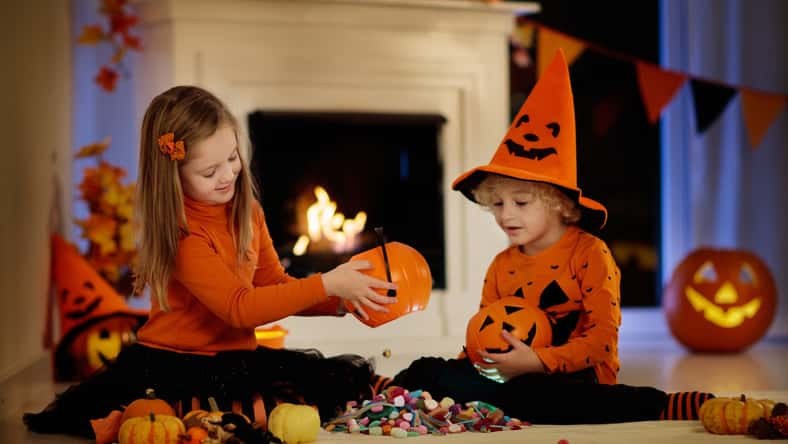The Truth Behind The Myths About Poisoned Halloween Candy Might Surprise You

Every Halloween, kids across the country get dressed to the nines and go door-to-door, hoping to score a pillowcase full of candy.
But, once many kids return home, their inevitable sugar comas are put on hold. Why, you might ask? Well, their parents want to check the candy for tampering first.
Myths about poisoned and tainted candy being distributed to unsuspecting kids on Halloween have swirled for decades. But, just how real is this threat, and should parents be so worried?
According to criminal justice experts and sociologists Joel Best and Gerald T. Horiuchi, the risk of your child picking up some dangerous candy is, thankfully, very low.
“Many, if not most, reports of Halloween sadism are of questionable authenticity,” the pair wrote following an extensive study of crimes linked to Halloween candies and traditions.
In fact, the study found that the myth is played up and blown out of proportion. And the few cases that were true were often exaggerated or had no definitive links to the fall holiday.
In turn, the sociologists believe that anxiety about Halloween wrongdoing rise during times of uncertainty and fear.
For example, in the early 1980s, there was outrage following a myriad of Tylenol poisonings. At the time, the acetaminophen had been laced with cyanide, placed on store shelves, and sold to unsuspecting customers. Then, once Halloween rolled around, fears surrounding the threat of poisoned candy skyrocketed.
Additionally, a few true Halloween crimes have contributed to the growing societal fear. First, back in 1964, a woman from New York named Helen Pfeil distributed dog biscuits and ant poison to children.

famveldman – stock.adobe.com – illustrative purpose only, not the actual person
Sign up for Chip Chick’s newsletter and get stories like this delivered to your inbox.
She was promptly arrested by authorities but, when questioned, claimed the “treats” were a joke. In fact, Helen said she only gave out the inedible items to older children who she believed should not have been trick-or-treating.
And even though no kids were ever harmed, law enforcement and the public did not take the “joke” lightly.
Then, on October 31, 1974, a Halloween candy poisoning committed by Ronald O’Bryan of Texas did sadly prove fatal. Ronald distributed pixie sticks laced with cyanide to five children, including his eight-year-old son.
The other children never ended up eating the pixie sticks. However, Ronald’s son did– and he tragically died afterward.
And upon investigation, authorities learned that Ronald had taken out life insurance policies on his children just before Halloween. In turn, he was found guilty of murder, and tales of the “Candyman” murder have continued to haunt parents everywhere to this day.
However, other more recent rumors of Halloween wrongdoing– including apples containing razor blades and candy injected with a poison– have never been corroborated.
So, with Halloween just over a month away, parents can keep in mind that cases of treat tampering are few and far between.
If true crime defines your free time, this is for you: join Chip Chick’s True Crime Tribe
The Terrifying True Tale Of The Real Annabelle Doll And What Her Reign Of Terror Looked Like
More About:Freaky





